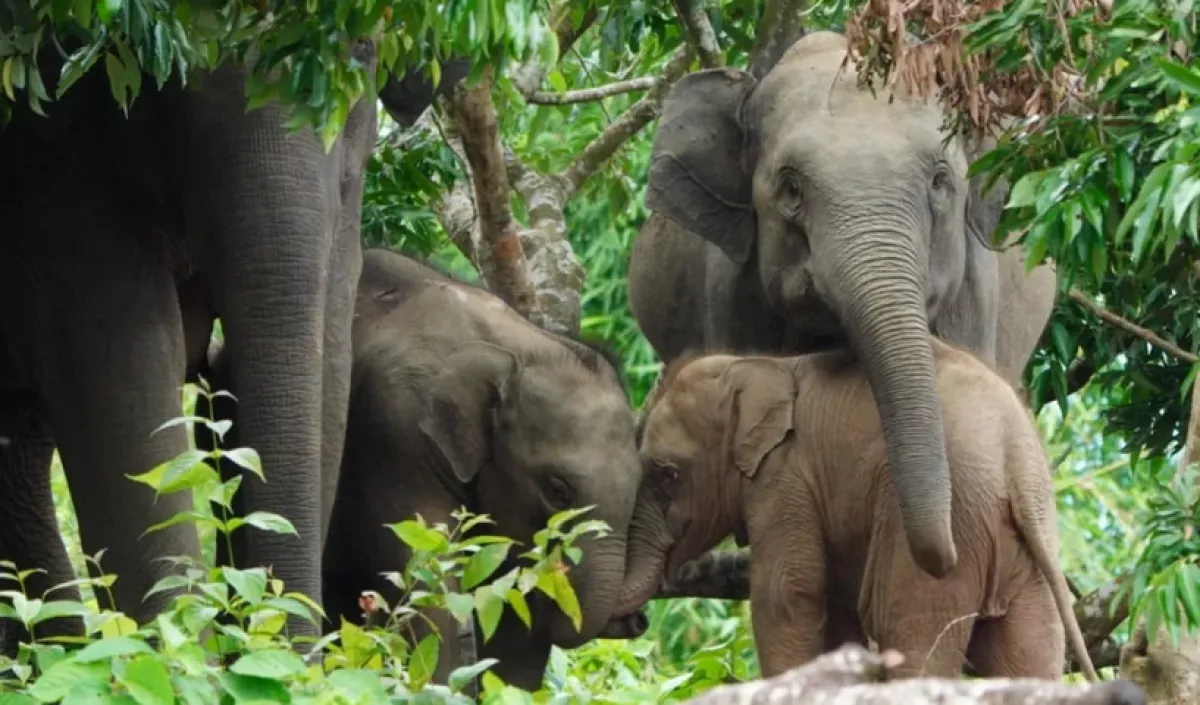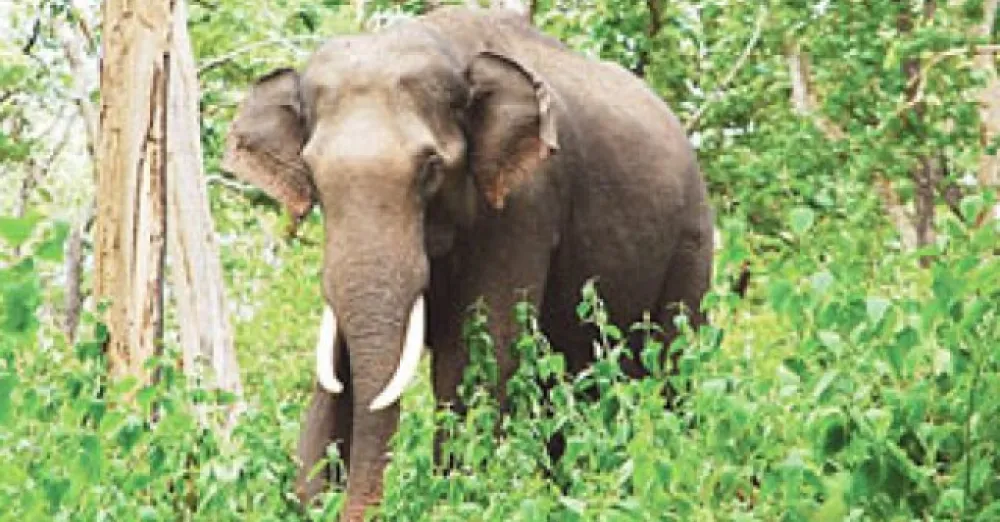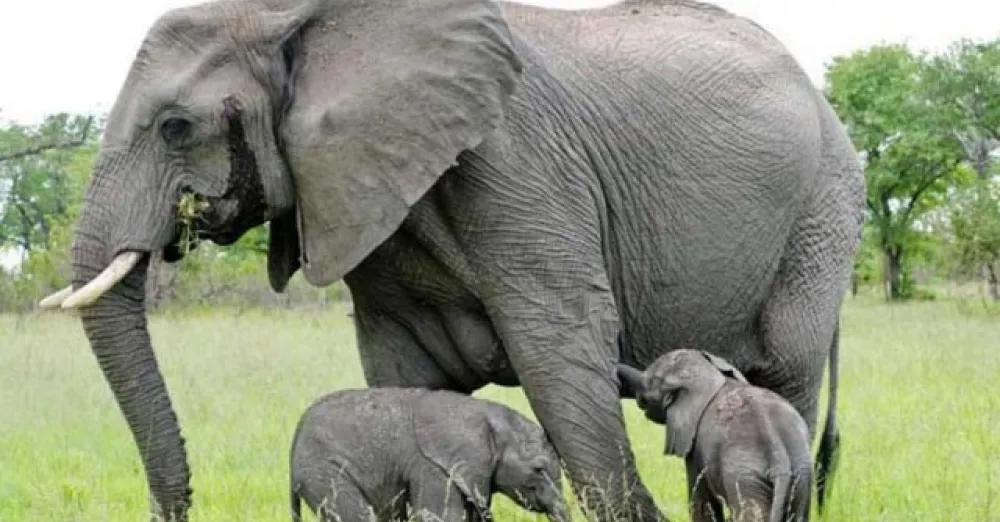
I was scheduled to travel to Bogor, Indonesia, to attend the 4th meeting of the Asian Elephant Specialist Group from May 20-22, 1992. When I went to the visa office of the Indonesian Embassy in Dhaka, the visa officer asked me about the purpose of my trip to Bogor.
After hearing my explanation, he was surprised and asked, “Are there elephants in Bangladesh?”
I replied, “Why are you so surprised?”
He said, “Your country is so small, with so many people, how can elephants survive there?”
I responded, “Your country also has a large population, yet elephants still survive there.”
He said, “But our country is much bigger.”
I explained, “We have been making continuous efforts to figure out how to share our country's limited space with wildlife.” I also mentioned, “Our government is very aware of this issue, and the people are quite enthusiastic about wildlife conservation.”
I personally witnessed this enthusiasm among the people of Sherpur. There were no elephants in that area for many years. But when a herd of elephants descended from the hills of Meghalaya in India — returning to what could be called the homeland of their ancestors — the local people were so excited that they invited their relatives from Dhaka and elsewhere to come and see the elephants.
However, that excitement faded once the elephants decided to stay, and eventually, conflicts began to emerge.
In 2004, two elephants crossed over from India’s Jharkhand, entered Bangladesh through Meherpur, and made their way to Gopalganj after crossing the Padma River. I, along with the WildTeam team, possibly arrived in Gopalganj around 3 am on May 17, 2004.
At that time, Md. Shamsur Rahman, the Conservator of Forests for the Wildlife Division of the Bangladesh Forest Department, informed me that the elephants had already moved on to Bagerhat.

In just eight days, the two elephants had traveled through eight districts of Bangladesh, and people everywhere welcomed them warmly. Some even carried buckets of water to offer them. A 28-member team from India, including mahouts (elephant handlers) and experts, arrived with 'Kunki' elephants (trained elephants used to manage wild ones) and large trucks.
The first elephant was tranquilized right after it had finished eating all the jackfruits from a tree in someone’s yard. I asked the elderly woman of the house, “Mother, doesn’t it feel sad that the elephant ate all the jackfruits from your tree?”
She replied, “No, I am very happy that an elephant came to my house!”
The Bangladesh Forest Department, the Ministry of Environment, and the Ministry of Home Affairs worked tirelessly to ensure the safe return of the two elephants to India.
Throughout the process, all the Indian organizations concerned with elephants, as well as the Indian High Commission in Bangladesh, maintained constant communication with me. I did everything possible to ensure full cooperation between the relevant authorities of both countries.
To my surprise, Mr. Dilip Sinha, the then Deputy High Commissioner of India in Bangladesh, wrote me a letter on May 18, 2004, saying…
"Dear Prof. Islam, I would like to thank you for all the effort put in by you in ensuring the safe return of the two wild elephants from Bangladesh. Without your relentless pursuit on this noble cause this extraordinary co-operation between the Forest Departments of the State of West Bengal and Government of Bangladesh would not have taken place. I hope this joint operation to relocate the two wild elephants will strengthen co-operation between the Forest Departments of the two countries to the benefit of wildlife in the region."
Elephant conservation is a trans-boundary issue. We need to involve all stakeholders in this.
The Bangladesh government created the Chunati Wildlife Sanctuary in 1986 to conserve elephants. The local people were not consulted at that time when the sanctuary was declared, which led to a negative perception about elephants. They believed that if there were forests, elephants would come closer to their homes.
Unfortunately, despite all the sincere efforts of the Bangladesh Forest Department, all the trees in the Chunati Wildlife Sanctuary were lost in a very short period of time.
As a result, elephants started visiting the locality frequently.
My former student Abdullah Al Jabed, who is currently working in Canada, and I conducted a study on human-elephant conflict in the Chunati Wildlife Sanctuary in 1991.
This was later published in the form of a research paper.
The Chunati Wildlife Sanctuary is an example of how difficult it is to conserve wildlife in a protected area without taking the opinions of the local people and involving them.
While conducting this research, we realized how important the interaction of conservation biology and social science is in wildlife conservation.
The railway line has passed through it. However, the good thing is that elephants are moving through the ‘over pass’ built on the railway line, which I witnessed in February this year.
Trees planted by the Forest Department are growing. Hopefully, it will soon be habitable for many threatened wildlife including elephants. However, many of the lost wildlife here, like the hoolock gibbons (ulluk) and the langurs (hanuman), may not return.

Chunati has been included as a MIKE (Monitoring the Illegal Killing of Elephant) site. Elephant-related information from Chunati is regularly sent to the South Asia Sub-Regional Office of the MIKE Program in New Delhi, India, which expresses Bangladesh's commitment to the international CITES agreement for elephant conservation at the regional and global levels. It also indicates the forest department's ability to enforce the law in elephant conservation.
On May 4, 2025, Mostafa Yousuf reported in Prothom Alo, quoting the Forest Department that 146 elephants have died in the country due to various reasons in the last nine years.
Out of these, 114 were in the southeast of the country and 32 in the north.
The Daily Star reported on May 6, 2025 that the forest department has recovered the bodies of elephants buried in the ground from the Bashkhali area of Chittagong.
That is, the number has reached 147 in the last nine years.
A 2016 IUCN Bangladesh survey found that the number of 'resident' elephants in the country was 268 and the number of 'migratory' elephants was 93. Their habitats are Chattogram, Chittagong Hill Tracts, Cox's Bazar, Netrokona, Sherpur, Mymensingh and Jamalpur.At the same time, the IUCN reported the number of 'captive' elephants in the country as 96.
I compiled a list of 93 ‘captive’ elephants in the country in 2001, which was published by the FAO in 2002.
The majority of these were recorded from the greater Sylhet region.
It feels good to know that the Bangladesh Forest Department and the Ministry of Environment, Forest and Climate Change have soon taken the initiative to survey elephants in the country and assess their current habitat status.
In June 2009, WildTeam, in collaboration with the Zoo Outreach Organization of India, organized a workshop titled ‘Human-Elephant Coexistence with Elephants’ in Chattogram and Sherpur areas with teachers, the Forest Department and NGO workers.
Through this, we have given ideas on some helpful methods to change people’s feelings and attitudes towards elephants. We have emphasized how to coexist with elephants by avoiding encounters with elephants and protecting crops and property.
People who live in the vicinity of elephant areas have sufficient knowledge on how to coexist with elephants.
Therefore, the local people should also take the initiative to discuss with the forest officials and find a solution to resolve the conflict. Only by creating a harmonious environment by involving the people in elephant conservation by presenting an acceptable way can the issue of human-elephant conflict be resolved.source : unb
